Beautiful, Yet Gigantic: Panasonic 70-200mm F2.8 Lumix S Pro Review
The 70-200mm f2.8 is revered among photographers for its versatile yet bright design. The mid-to-telephoto workhorse, however, is often heavy. The Panasonic 70-200mm f2.8 Lumix S Pro is the epitome of both the category’s versatility and weight. With up to seven stops of stabilization when combined with in-body stabilization, the lens delivers steady shots even at the telephoto end. But, at almost 3.5 pounds, it’s also heavier than mirrorless options from Canon, Sony, and Nikon.
I shot portraits, birds, and landscapes on the Panasonic 70-200mm f2.8 Lumix S Pro to see just how well the workhorse fares. The lens has a lot going for it — like stabilization and color — but you need to be willing to haul a lot of weight and sacrifice some edge sharpness.
Too Long, Didn’t Read
With up to seven stops of stabilization on a stabilized body, the Panasonic 70-200mm f2.8 Lumix S Pro fights the shake of working with a long lens. The mid-to-telephoto workhorse zoom produces beautiful colors and bokeh. But, it’s heavy and not the sharpest 70-200mm we’ve tested.
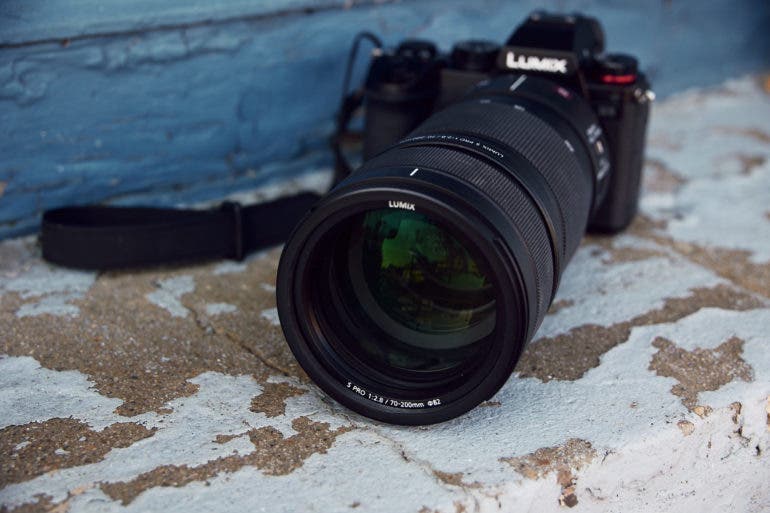
Panasonic 70-200mm f2.8 Lumix S Pro Pros and Cons
Pros
- Excellent stabilization to 7 stops
- Weather-sealed
- Lots of controls
- Beautiful color and bokeh
Cons
- Super heavy
- Edges are soft
Gear Used
I used the Panasonic 70-200mm f2.8 Lumix S Pro with the S5 body. The lens typically includes a hood and a tripod collar. However, I tested a used lens — a short-term media loan — without these two items.
Innovations
The 70-200mm f2.8 is a popular workhorse. The most notable feature on Panasonic’s take on this popular focal length zoom is the stabilization. Paired with IBIS, it gets up to seven stops of stabilization. I shot at 1/2.5 at 200mm and the image is actually useable. That’s even more than Canon does with the Canon EOS R5 and the Canon EOS R6 with their own variant.
Panasonic 70-200mm f2.8 Lumix S Pro Tech Specs
Panasonic lists these specifications for the Panasonic 70-200mm f2.8 Lumix S Pro:
- Lens Mount: L-Mount
- Format Compatibility: Full Frame
- Focus Type: Auto Focus
- Closest Focus Distance: 3.12’ / 0.95m
- Focal Length: 70-200mm
- Angle Of View: 34 Degree (Wide) – 12 degree (Tele)
- Maximum Aperture: f2.8
- Minimum Aperture: f22
- Maximum Magnification: Approx. 0.21x
- Filter Size: 82mm
- Lens Elements / Groups: 22 elements in 17 groups, 2 UED (Ultra Extra-low Dispersion) lenses, 3 ED (Extra-low Dispersion) lenses
- Diaphragm Blades: 11 diaphragm blades / Circular aperture diaphragm
- Dimensions Diameter x Length: 3.71” x 8.21″ (94.4 x 208.6 mm) (from the tip of the lens to the base side of the lens mount)
- Weight: 55.38 oz / 1570 g (excluding lens cap, lens rear cap, lens hood and external tripod mount) (External tripod mount: Approx. 230g / 8.11oz)
Ergonomics
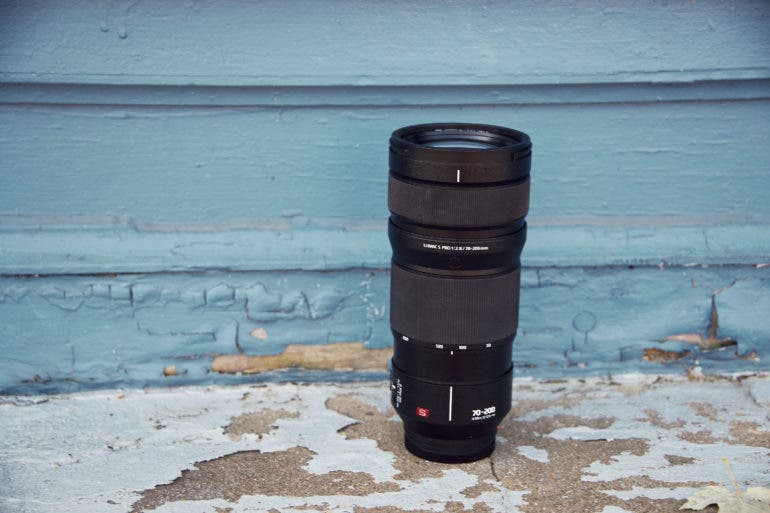
Weighing almost 3.5 pounds, the Panasonic 70-200mm f2.8 Lumix S Pro is not lightweight. The heft is expected for this category of workhorses, but it is still a bit heavy for the category. Canon’s RF 70-200mm f2.8 checks in at 2.35 pounds, Nikon’s at 2.99, and Sony’s at 3.26. It’s definitely a two-hander and not a lens that photographers are going to want to shoot with all day.

The control scheme is relatively standard. Two switches sit near the lens mount. One is for stabilization, the other is the focus limiter switch. The zoom ring, which is large and grippy, is up next.
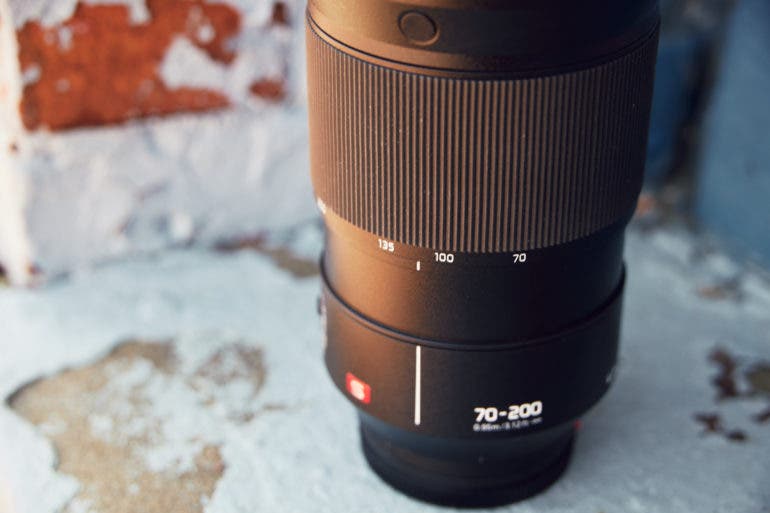
Panasonic added two programmable shortcut buttons between the zoom ring and the focus ring. One sits on the top, the other on the side near the left hand. Both buttons do the same thing — there’s no menu option to program them separately. The different placement is simply for quick access holding the camera vertically or horizontally.
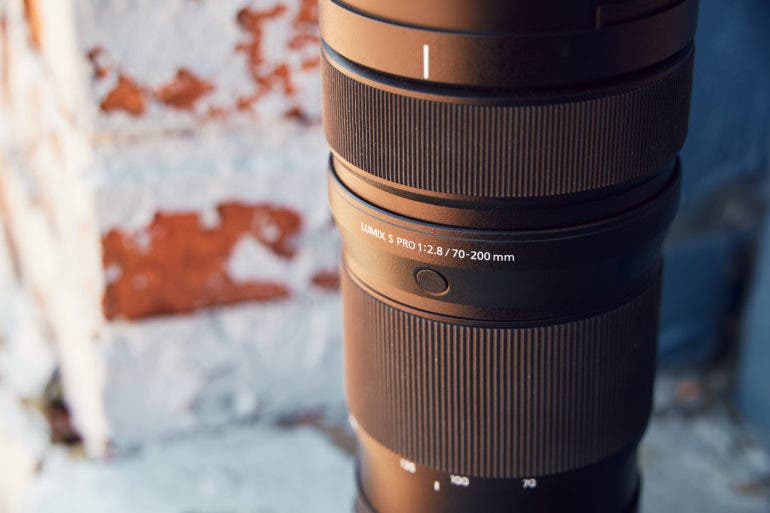
The ring at the end is the focus. It’s thinner than the zoom ring, which can help differentiate the two even though the rings are a good distance apart. You’re not going to be always grabbing the wrong one. The focus ring pulls forward, towards the lens mount, to enter into manual focus. It’s a clever space-saver. But, those new to Panasonic lenses may be confused to find the lens suddenly in manual mode. The ring occasionally catches when pulling it out of a bag and ends up in manual mode. Now that you just read those last two sentences, that won’t be an issue — but newbies need to find this control.
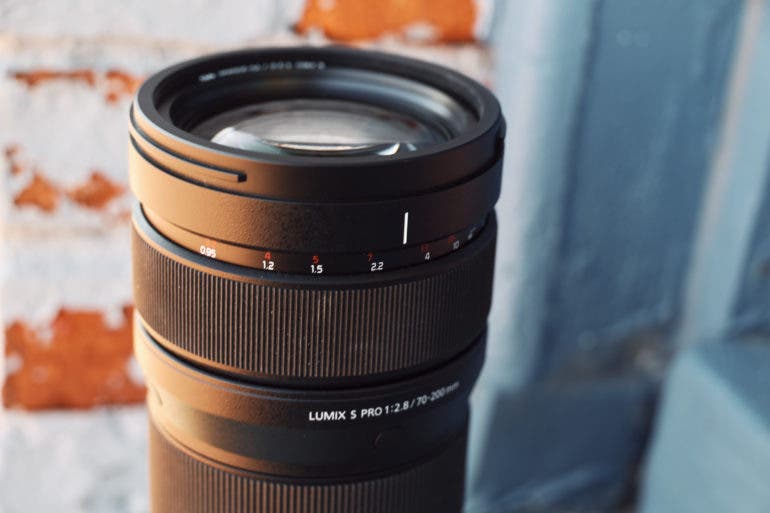
The front of the lens accepts 82mm filters. The lens typically ships with a removable tripod collar and a lens hood (our used lens did not, so the lens is pictured without).
Build Quality
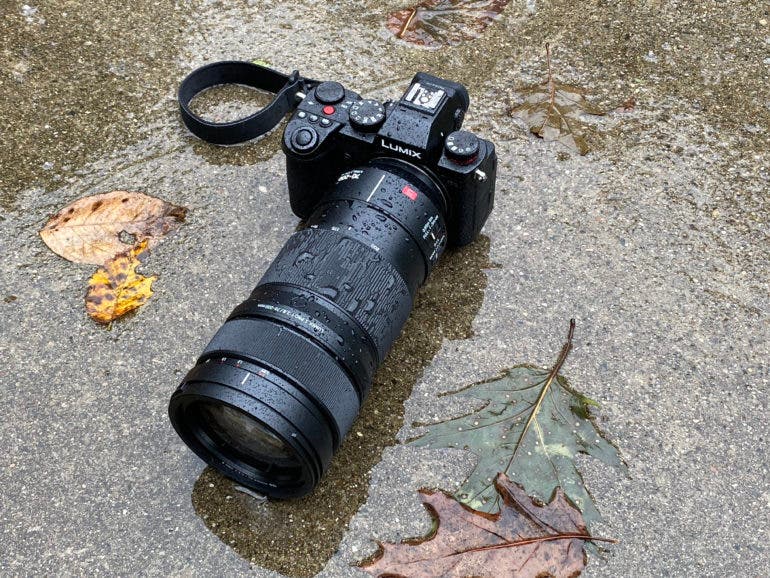
The weight is a pretty good indicator that this lens isn’t cheap glass. The lens feels sturdy. The construction is plastic, but I can’t imagine working with this lens if the weight went up even more to accommodate a metal body.
The Panasonic 70-200mm f2.8 Lumix S Pro is weather-sealed. I gave it a good splash and it kept shooting. I didn’t see any visible dust or moisture inside the end of the lens or inside on sensor of the body after shooting.
Autofocus

The Panasonic 70-200mm f2.8 Lumix S Pro uses a double-focusing system. It has both a linear motor and a stepping motor. Still, as with any telephoto, there are a lot of heavy optics to move. The lens, however, didn’t seem to bog down the performance I would expect from the S5. It can focus as close as 3.12 feet from the front of the lens.
While out shooting wildlife and portraits, I didn’t have to wait on the autofocus from this lens. I tested the continuous autofocus on a dog running full speed directly towards the camera. Between 20 and 30 percent of these shots were soft, focusing on the dog’s back or rear-end instead of his face. That’s about what I would expect from a telephoto on the S5 body. I still had a decent amount of keepers.
I used the lens at the end of golden hour and indoors. It was still more than capable of focusing on subjects with just a bit of contrast.
Ease of Use

The most difficult thing about using the Panasonic 70-200mm f2.8 Lumix S Pro is going to simply be the weight. It’s a lot of weight to carry around. But there are a few other features beginners will need to learn their way around.
The controls for OIS and the focus limiter are labeled. Total newbies may need to Google them, but the labels make it easy to jump into. The function buttons are unlabeled, however, and require some menu digging to choose what to control with those two buttons.
Finally, pulling back the focus ring to switch to manual focus is an unlabeled, hidden control. I was certainly confused picking up a lens with this feature for the first time. But, once you know it’s there, it’s easy to use. A labeled switch next to the OIS would require pulling the camera away from your face to use. But, you can pull back the focus ring without looking. That’s important if you are using autofocus, then switching to manual to lock in that position, since you don’t want to move the camera at all.
Image Quality

The biggest perk to the 70-200mm f2.8 Lumix S Pro is the image stabilization that allows you to sometimes shoot at lower shutter speeds and, in turn, lower ISOs. I shot an acceptably sharp photo at 1/2.5 at 200mm. I had to hold my breath and tuck my elbows, but, after hearing the long shutter click, I was surprised to see an image on the back of the LCD screen that wasn’t all a blur. When you’re not carefully timing your breathing, you’ll want to shoot higher for a little more wiggle room. While the stabilization is impressive, the bokeh and colors are still solid as well.
Bokeh

Telephoto lenses are often bokeh machines and the Panasonic 70-200mm f2.8 Lumix S Pro is no different. While a telephoto prime will get you more bokeh, you can get some nice soft backgrounds at 200mm f2.8.
Points of light create nice, rounded bokeh balls at the center that, as expected, elongate towards the edges. Telephoto lenses will make the background appear closer. At 200mm, you can make those nice bokeh balls appear larger and much more obvious.
Sharpness

My shots with this lens were mostly sharp, but not overly sharp. This lens isn’t as sharp as the Nikon Z 70-200mm f2.8, and it’s not the extra sharpness that I’ve come to expect from Sony either. The center is acceptably sharp shooting wide open. But, the edges are soft, even stepping down to f4. This is even more so when shooting at 200mm. With the subject towards the center, that just adds to the bokeh. But, it’s not a lens I would use to place a subject on an extreme edge.
Lens Character

With its Pro designation, the Panasonic 70-200mm f2.8 Lumix S Pro does a good job of controlling aberration. Pincushion distortion — the cousin to barrel distortion more common in telephotos — was also well controlled.
Shooting into the light without a hood, I could get some flare. The 200mm focal length’s ability to make the background feel closer and the lens’ excellent colors also help build character. It sits at a happy medium between the character of vintage-inspired lenses and sterile over-sharp optics.
Color Rendering

I really like the colors coming from mixing this lens with the S5. Even using just Panasonic’s standard color profile, it renders skin tones quite beautifully. Foliage too is a nice deep green.
Extra Image Samples
From day one, The Phoblographer has been huge on transparency. Nothing from this review is sponsored. Further, lots of folks will post reviews and show lots of editing in the photos. The problem then becomes that anyone and everyone can do the same thing. It’s not showing what the lens can do. So we have a section in our Extra Image Samples area to show edited and unedited photos. From this, you can make a decision for yourself.
Edited


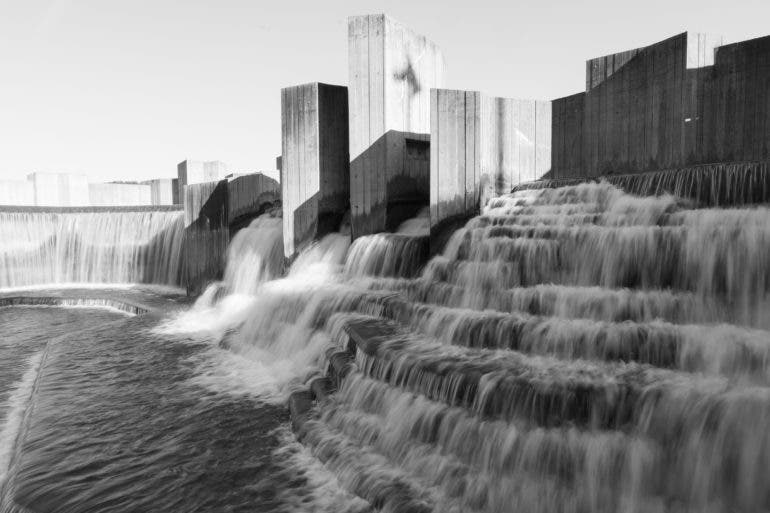









Unedited

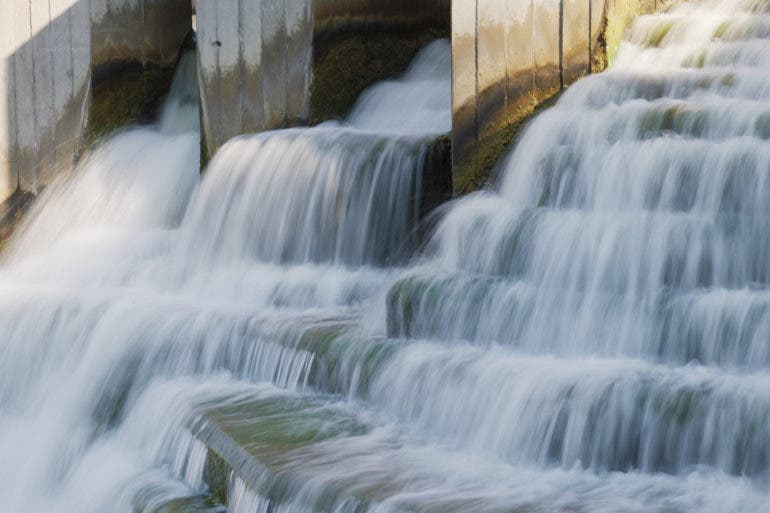




Conclusions
Likes
- The stabilization on this lens is excellent.
- It’s weather-sealed and feels pretty durable.
- There are plenty of controls and a shortcut button.
- The colors here are beautiful, and so is the bokeh.
Dislikes
- At almost 3.5 pounds, it’s a lot to carry around with the S5, even on shorter hikes.
- The edges are soft, significantly so at 200mm.
L mount photographers looking for a long workhorse lens likely won’t be disappointed with this lens. Seven stops of stabilization is a huge benefit for any long lens like this. The colors are beautiful and the distortion is well-controlled. And, to top it off, it’s sealed against dust and moisture.
But, it’s not a lens that’s so spectacular that it will tempt other photographers to switch systems. When I shot with the Nikon Z 70-200mm f2.8, I started seriously thinking about buying into Z mount because the images worked so well. This is not that kind of lens. The colors and stabilization are excellent, but it’s one of the heaviest of its kind. And, the sharpness will prevent photographers from placing a subject at the extreme edges. It sits squarely in good, but not great territory.

I’m giving the Panasonic 70-200mm f2.8 Lumix S Pro four out of five stars. Want one? They’re on Amazon for around $2,597.